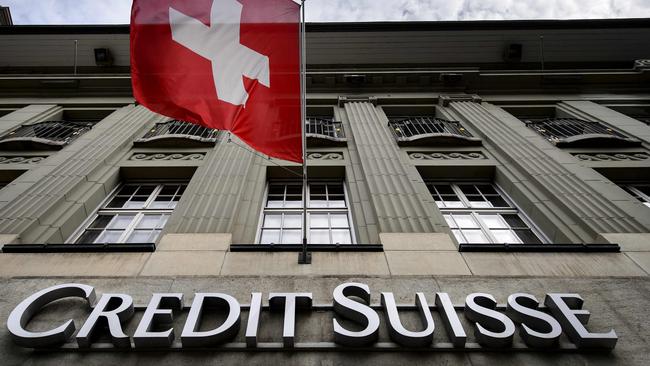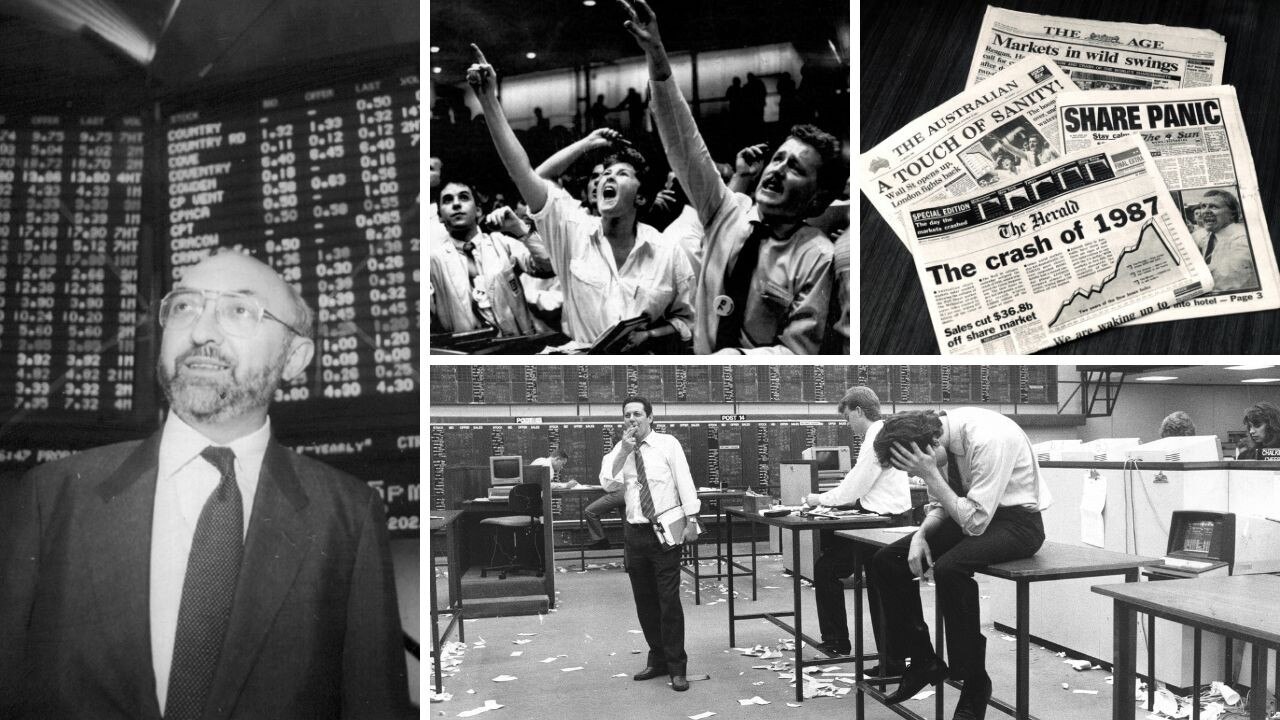No, banking crisis engulfing Credit Suisse is not 2023’s Lehman
A mighty global implosion might still be lurking out there but as of right now, we were not seeing ‘another Lehman’, writes Terry McCrann.

Terry McCrann
Don't miss out on the headlines from Terry McCrann. Followed categories will be added to My News.
Oh dear, I hope this isn’t prophetic. The chairman of Credit Suisse is one Alex, ahem, Lehmann.
Yes, the sudden implosion at the Swiss bank threw an overnight curve ball into what I’ve described as the ‘Good News two-fer’ out of the Silicon Valley Bank collapse.
Before CS released its – delayed – annual report that admitted to “weaknesses” in its financial controls, futures trading had pointed to a second successive strong recovery day on Wall St.
That was on the basis that the Fed had cauterised the SVB collapse – by throwing more ‘funny money’ billions at it - and could even finally deliver a rate pause at its meeting next week.
After the CS report, though, everything flipped: Dow futures swung close to 1000 points in the red direction.
It suddenly started to look all-too ominous. First the crypto collapse of SBF, Sam Bankman-Fried. Then the tech darling’s bank SVB. And now CS at the heart of Swiss and European banking.
Were we seeing the script of GFC Version 2.0 starting to play out?
I hesitate to say no, although we can take some comfort that the CS chairman’s name is spelt with the original double-n not the Americanised one.
The reason for my hesitation is the underlying disaster that has been exposed and indeed directly caused by the universal raising of policy interest rates and the accompanying global high single-digit inflation.

his has combined to send the market values of the $US60 trillion ($90 trillion) of government bonds out there plunging – the proximate cause of the SVB collapse. The key counter to understand is that the implosion at CS – and which dragged the share prices of all the other European banks down with it, albeit by differing degrees and far less dramatically - is that it was not directly linked to the SVB collapse.
This was not, as in 2008, driven by complex linkages from one financial institution to the next. Indeed, there is no apparent link at all between SVB and CS, even indirectly via complex and opaque financial derivatives and the like. Indeed, there wasn’t even a timing link: fear in Manhattan crossing the pond to Zurich.
The CS implosion was entirely ‘home grown’.
CS has long been a financial mess, created by trying to be too ‘entrepreneurial’ – light years away from the traditional Swiss banking model of secrecy and sobriety. Then, in the last week having to delay its report because of ‘enquiries’ from the US financial regulator, the SEC; and then the report itself with so many figures in it in brackets – that’s to say, red ink – accompanied by those ‘admissions’.
Heading for markets opening in Europe Thursday night and Wall St at midnight, futures were trading up strongly across the board. A mighty global implosion might still be lurking out there. But as of right now, we were not seeing ‘another Lehman’.
CS was a CS and a European problem.
SVB was a quite separate US and a Fed/Treasury problem, that was not going to drag an ever expanding list of other banks into the financial sinkhole with it.
Not now that the Fed and the US administration have basically given a blanket guarantee of 100 per cent security to every bank deposit in America.
And the Fed will further soothe frayed financial nerves when it leaves its rate unchanged next week, or, second best for the market, hikes by only 25 points.
Back on the home front, the latest jobless numbers did not tell us the employment surged in February, just as the previous two months did not tell us the exact opposite.
One month’s jobs and jobless numbers are always dodgy, at this time if the year the seasonal adjustment is a guess. You can all see the jobs reality.



